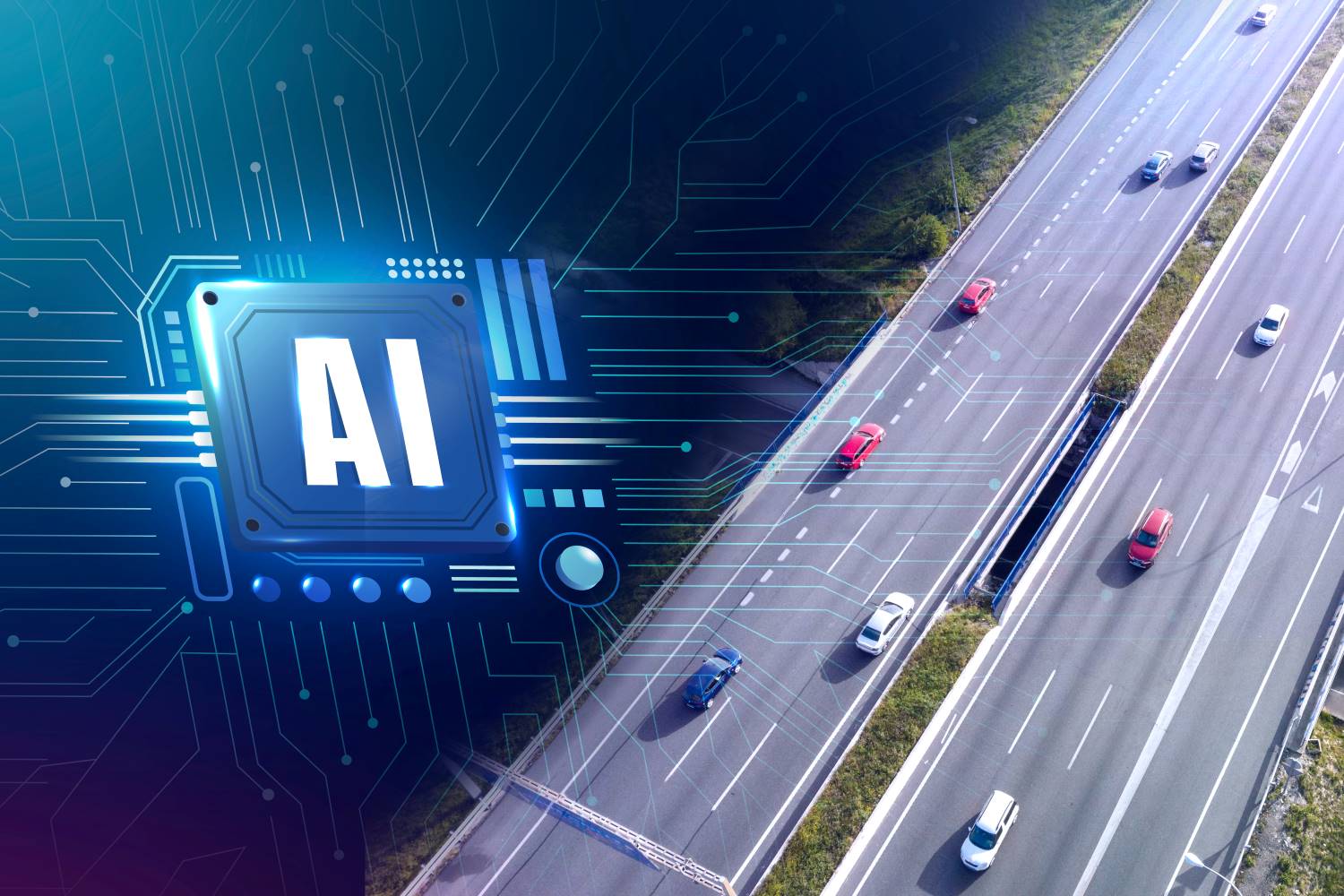
15 Aug SafeTruck Sustainability Reporting for Logistic Carbon Analytics
SafeTruck Sustainability Reporting for Logistic Carbon Analytics
Version 07/2023 – 15 August 2023 – 3 Minutes

SafeTruck Sustainability Reporting for Logistic Carbon Analytics
Abstract :
This whitepaper aims to delve into the importance of sustainability reporting in the logistic industry and how SafeTruck’s innovative approach to carbon analytics is transforming the way businesses measure and manage their carbon footprint. By providing detailed insights into emissions data and offering actionable solutions, SafeTruck empowers logistics companies to optimize their operations, reduce environmental impact, and contribute to a sustainable future. This whitepaper highlights the key features of SafeTruck’s sustainability reporting framework, the benefits it brings to the industry, and real-world case studies showcasing its effectiveness.
1.0 Introduction
Overview of Sustainability Reporting in Logistics
Sustainability reporting is a vital tool for logistics companies to measure, manage, and communicate their environmental, social,and governance performance. With increasing concerns about climate change, resource scarcity, and stakeholder expectations, transparency and accountability are becoming essential.
In the logistics sector, where transportation and supply chain activities contribute significantly to greenhouse gas emissions, sustainability reporting has gained prominence. It helps companies identify inefficiencies, set emission reduction targets, and showcase their commitment to sustainable practices.
Embracing sustainability reporting brings numerous benefits to logistics companies. It aligns operations with international frameworks like Global Reporting Initiative (GRI) and the Sustainability Accounting Standards Board (SASB). Additionally, it allows benchmarking against industry peers, roosters stakeholder collaboration, and attracts socially responsible investors.
The Need for Effective Carbon Analytics
As concerns about climate change and environmental sustainability grow, organizations are under mounting pressure to measure, manage, and reduce their carbon emissions. SafeTruck recognizes the significance of this challenge and offers innovative solutions to help businesses tackle it head-on.
SafeTruck understands the unique needs of businesses in managing their carbon emissions and offers a comprehensive suite of tools and technologies to support effective carbon analytics. Our advanced systems enable real-time monitoring and data collection, empowering organizations to track their carbon performance accurately. With our intuitive analytics platform, businesses can analyze their carbon data, identify patterns, and make informed decisions to optimize their sustainability efforts.
By leveraging SafeTruck’s expertise in carbon analytics, businesses can gain a deeper understanding of their environmental impact, set meaningful reduction targets, and implement targeted initiatives to drive positive change. Our solutions enable organizations to not only meet regulatory requirements but also go beyond compliance and become leaders in environmental stewardship.
SafeTruck’s Role in Driving Sustainability
SafeTruck plays a pivotal role in driving sustainability by providing innovative solutions and technologies that empower businesses to measure, manage, and reduce their environmental impact. With our advanced systems and analytics capabilities, we enable organizations to optimize fuel consumption, track carbon emissions, and make informed decisions for a greener future.
By offering comprehensive sustainability solutions, SafeTruck is committed to helping businesses drive positive change, minimize their carbon footprint, and contribute to a more sustainable and environmentally-conscious world.
2.0 SafeTruck Sustainability Reporting Framework
Data Collection and Measurement
Effective sustainability reporting relies on accurate and comprehensive data collection and measurement. At SafeTruck, we prioritize the collection of relevant environmental, social, and governance (ESG) data to develop a robust sustainability reporting framework.
To ensure data accuracy, we implement measurement methodologies and leverage advanced technologies. Automated data collection systems, IoT sensors, and smart monitoring tools enable us to capture real-time information on energy usage, fuel consumption, emissions, and other relevant metrics. This streamlined approach eliminates manual errors and provides reliable data for sustainability reporting
Emissions Calculation Methodology
SafeTruck is committed to transparency and accuracy in emissions calculation for our sustainability reporting framework. Our emissions calculation methodology is continuously reviewed and updated to align with evolving industry standards and best practices. We ensure the accuracy and reliability of our emissions data.
Performance Benchmarks and KPIs
SafeTruck’s sustainability reporting framework incorporates performance benchmarks and key performance indicators (KPIs) to effectively measure and track our progress towards our sustainability frameworks such as the Global Reporting Initiative (GRI). Sustainability reporting framework ensures transparency and accountability, enabling us to communicate our progress and achievements to stakeholders and foster a culture of sustainability within our organization and the wider industry.
3.0 Benefits of SafeTruck Sustainability Reporting
Improved Visibility and Transparency
SafeTruck’s sustainability reporting brings enhanced visibility and transparency to our environmental, social, and governance (ESG) performance. By implementing a robust reporting framework, we provide stakeholders with valuable insights into our sustainability efforts, fostering trust, accountability, and driving positive change.
Few of Benefits of Improved Visibility and Transparency :
Risk Management : Improved visibility and transparency enable us to identify and mitigate sustainability risks more effectively. By monitoring and reporting on key performance indicators (KPIs), we gain insights into potential areas of concern and can take proactive measures to address them, ensuring long-term sustainability.
Innovation and Continuous Improvement : By openly sharing our sustainability initiatives, challenges,and progress, we invite collaboration, as we learn from other’s experiences and collectively work toward finding solutions to complex sustainability issues.
SafeTruck’s commitment to enhanced visibility and transparency through sustainability reporting is instrumental in driving positive change. By sharing our sustainability journey openly, we contribute to broader industry understanding, inspire others, and collectively strive towards a more sustainable and prosperous future.
Cost Savings and Operational Efficiency
SafeTruck’s sustainability reporting delivers cost savings and operational efficiency benefits. By analyzing data and optimizing resource allocation, organizations can identify inefficiencies, streamline processes, and reduce costs. Through sustainable operational strategies, businesses can achieve resource optimization, lower expenses, and enhance overall productivity. SafeTruck’s reporting framework empowers organizations to drive financial and operational performance, leading to improved cost savings and operational efficiency.
Compliance with Regulations and Stakeholder Expectations
SafeTruck’s sustainability reporting ensures compliance with regulations and meets stakeholder expectations. By following established sustainability frameworks and reporting guidelines, organizations can showcase their dedication to responsible practices. This commitment facilitates regulatory compliance and mitigates the risk of penalties. Furthermore, transparent reporting cultivates trust and confidence among stakeholders who anticipate businesses to operate ethically and sustainability reporting empowers organizations to meet these expectations, bolster their reputation , and cultivate robust stakeholder relationships.
4.0 Case Studies and Success Stories
Achieving Carbon Neutrality
Carbon neutrality has become a crucial goal for businesses worldwide, as companies seek to mitigate their environmental impact and contribute to a sustainable future. In this collection of case studies and success stories, we delve into the journeys of several multinational corporations (MNCs) that have successfully achieved carbon neutrality.
Example of the International Company achieving carbon neutrality is “Delta Air Lines”. It has been a major buyer of carbon offsets. Due to its inherent difficulty in decarbonizing, the global aviation industry is one of the hardest to abate. The airline will spend more than $30 million to offset over 10 months during the 2020 period. This firm also commits to combating climate change and achieving net-zero greenhouse gasses emission by 2050.
As a medium-term goal, they hope to switch to sustainable aviation fuel by 2030 and replace 10% of their present jet fuel. As part of this agreement, Delta has promised to purchase 70 million gallons of sustainable aircraft fuel per year in the near future.
Through these success stories, we explore the tangible benefits and positive outcomes that MNCs have experienced as a result of their carbon neutrality efforts. These include cost savings through energy optimization, enhanced brand reputation, increased customer loyalty, and improved stakeholder engagement. Moreover, we delve into the lessons learned and best practices that can serve as inspiration and guidance for organizations on their own path to carbon neutrality.
Route Optimization and Emissions Reduction
Discover inspiring case studies and success stories showcasing the power of route optimization in reducing emissions for businesses. By leveraging advanced technologies and data-driven solutions, organizations have achieved significant reductions in carbon emissions and improved operational efficiency. These real-world examples demonstrate the benefits of optimizing transportation routes, such as reduced fuel consumption, lower emissions, and improved delivery times. Explore how these success stories have not only driven sustainability but also positively impacted cost savings, customer satisfaction, and overall business performance.
5.0 Future Trends and Opportunities
Integration of Artificial Intelligence
SafeTruck recognizes the immense potential of integrating Artificial Intelligence (AI) in our operations and solutions, paving the way for future trends and opportunities. With AI-powered technologies, we can enhance safety, optimize efficiency, and unlock new possibilities for our customers and the transportation industry.
Future trends in AI for SafeTruck include the development of intelligent route planning, predictive maintenance, and real-time risk assessment systems. By leveraging AI algorithms, we can analyze vast amounts of data, detect patterns, and make data-driven decisions for improved operational outcomes.
Collaboration and Standardization in Sustainability Reporting
Collaboration and standardization in sustainability reporting hold immense significance for SafeTruck as we navigate future trends and seize opportunities in this field. By fostering collaboration with industry peers, stakeholders, and standard-setting organizations, we can drive the development of unified frameworks and reporting guidelines that enhance transparency, comparability and credibility.
6.0 Conclusion
SafeTruck’s sustainability reporting framework provides a powerful tool for organizations to measure, manage, and communicate their environmental, social, and governance (ESG) performance. By implementing robust data collection and measurement methodologies, SafeTruck ensures accuracy and reliability in sustainability reporting. The framework incorporates performance benchmarks and key performance indicators (KPIs) to track progress and foster transparency and accountability.
The benefits of SafeTruck’s sustainability reporting are manifold. Improved visibility and transparency enhance stakeholder trust and drive positive change. It enables organizations to identify and mitigate sustainability reporting, delivers cost savings, operational efficiency, and compliance with regulations, meeting stakeholder expectations.
SafeTruck is committed to driving sustainability through its innovative approach to carbon analytics, empowering organizations to optimize operations, reduce environmental impact, and contribute to a sustainable future. As we move forward, SafeTruck remains dedicated to fostering collaboration, embracing emerging trends, and seizing opportunities for the betterment of the transportation industry in the world.











No Comments